The
Hypermotard family moves into
2011 with the highly successful and accessible
Hypermotard 796, the Hypermotard 1100EVO and the extreme, track-ready Hypermotard 1100EVO SP. The powerful evolution models, in addition to the lightweight 796, represent
Ducatis continued excitement in the Hypermotard concept and their commitment to the familys future development. Many features of the latest models were in response to requests from Ducatisti worldwide and represent the factorys ongoing ability to respond to direct owner feedback. The Hypermotard prototype was an instant success when first shown in Milan at the end of 2005 and soon became a top seller when its production started in 2007. Since then, its unique design has excited riders around the world and praise for this thrilling and versatile bike has never stopped – and neither has its evolution. Today, the range remains as Hyper as ever.
So whats the hype?
The original Hypermotard was built to thrill, with its dirtbike stance, empowering, asphalt-attacking riding position and enough torque on tap to elicit a smile with each twist of the throttle. But what could really be changed to make it better? Ducati applied their usual engineering process of evolution to an already successful model by improving it in the two most effective ways possible: Less weight and more power.
Lightweight Trellis frame
The quick and precise handling that the Hypermotard provides is down to the construction and geometry of its famous Trellis frame. Its ability to handle the abundant torque from the L-Twin engine and its rigidity under powerful Brembo braking are just a few reasons why Ducatis chassis department would never want to change it. But it could be made lighter. They realised that almost all of the heavy forged sections of the construction could be completely removed without reducing its strength or its performance, so they applied it to the entire family.
Light and powerful engines
While the chassis department were busy reducing the weight of the frame, the engine department went
back to the drawing board for the 796 and started with a clean sheet of paper. Their complete redesign of the crankcases rewarded them with an incredible saving of 1.2kg (2.64lb) compared to the original 696 castings, and the new 796 crankshaft with 848-style flywheel further reduced the overall engine weight to an impressive 1.9kg (4.2lb) savings over the original 696 power unit. With 81hp (59.6kW) of smooth and flexible power, the 796 becomes a very credible package.
The 1100 air-cooled Desmodue Evoluzione engine truly is an evolution – both in power and weight – and is responsible for the model name extension 1100 EVO. Engineers used the same Vacural® technology employed for the lightweight Superbike engines when they vacuum die-cast the Hypermotard 1100 crankcases, a process that achieves a significant weight saving and ensures consistent wall thickness and increased strength. This process – combined with the lightweight crankshaft assembly that uses an 848-style flywheel and use of lighter rare-earth magnets in the alternator – reduced the 1100 power units weight by a staggering 5.2kg (11.5lb). Couple those savings with a boost to 95hp (69.9kW) and it becomes clear why theres all the hype.
Compact and efficient, the Desmodue engines hyper-lightweight and narrow L-Twin layout, no wider than a single cylinder, ensures that all Hypermotards remain lean and agile. The air-cooled design eliminates the need for water radiators, hoses, reservoirs and pumps, keeping the motorcycles weight down to a minimum and its lines clean and race-like.
Latest controls and instrumentation
The entire Hypermotard family uses the electronic advances made in the compact and user-friendly
switchgear and instrumentation first created for the Streetfighter.
The slim-line switch bodies house easy-to-use switches and buttons, and feature a unique weapons-like trigger catch that slides down to cover the starter button when the kill-switch is activated. Their minimalist design fits perfectly in the clean and essential lines of the Hypermotards sporting image.
Looking clean and purposeful, the display provides an extensive amount of data including speed, revs, time, oil temperature, battery voltage, A & B trips, fuel reserve trip and scheduled maintenance, while the warning lights illuminate for neutral, turn signals, high-beam, rev-limit, oil pressure and fuel reserve.
In addition, it can list recorded lap times by using the high-beam flash button as a stopwatch. Both the 1100EVO and 1100EVO SP use a white back-lighting while the 796 uses an orange back-lighting.
The instrument display also doubles as a control panel for the activation of the Ducati Data Analyser (DDA) system, which is available as an accessory from Ducati Performance for the system-ready Hypermotard 796 and 1100EVO and supplied as standard equipment on the 1100EVO SP. The DDA-intended USB connection port under all of the Hypermotard seats doubles as a charging point for a handy battery charger, which is available as an accessory from Ducati Performance.
Hyper mirrors
Ducati pushed motorcycle design limits to find an innovative solution for the original Hypermotard mirrors and these are now used throughout the family. The challenge of maintaining a clean, racing look around the handlebar area motivated the design of the folding mirror concept which is based on the handguards typically found on off-road bikes. Flipped out for high visibility street mode and easily folded in for a quick change to Hypermode, the mirror handguard assemblies also integrate the LED directional indicators for an even cleaner front-end.
Lighting and indicators
The headlamp uses a highly compact lighting shape which blends with the single piece nose fairing and
front fender moulding, while the rear light employs a specially designed strip of LEDs enhanced by a high diffusion lens shaped into the sleek lines of the tailpiece. The same LEDs are intensified under braking. The front directional indicators also employ the latest in LED technology for illumination, and are ingeniously integrated into the handguards which support the foldable rear view mirrors.
Tailpiece
The high intensity LED rear light assembly is moulded into a unique tailpiece positioned high behind the
seat. The supporting structure has been designed so that the under tray of the tailpiece is formed perfectly to offer a sturdy pair of pillion grab-handles. This ingenious solution not only helps to merge the rear light into the Hypermotard styling but also provides a safe grip for the passenger.
Footpegs
Rider footpegs on all of the Hypermotard models have removable rubber inserts to expose the serrated metal edge and increase boot grip on the peg during extreme riding. The 1100EVO and 1100EVO SP provide a further minimalist and no-compromise feature by having removable passenger footpegs. This attention to detail enables a clean monoposto look when on the track, while allowing a fast and easy change to biposto for the street.
The Hypermotard StoryWhen the prototype Hypermotard was first shown at the Milan show it represented the creation of a new segment, one that bridged the gap between refined sportbikes and minimalist supermotards. But some at Ducati had reservations about the initial Hypermotard concept and were unsure whether or not the market was ready for such a motorcycle.
Despite those reservations, the project continued to be developed, driven by the belief in the upright and incontrol riding position of a dirtbike, but not the harsh characteristics of its single cylinder engine. These confident few liked the feel of a skinny, taut and agile chassis, but not the fact that its original off-road design made it a compromise on the street. They set about creating a bike that combined the agility and lightweight precision of a supermotard, with the refined power characteristics of a charismatic L-Twin Ducati sportbike. They were designing the future.
As each day went past, more and more people in the factory got to hear about the completed bike and those who had the chance to catch sight of it all responded in the same way: "Wow! Were going to produce it, right?" There was one way to gauge market response: show it at the 2005 Milan show as a prototype and conduct an online survey.
Ducati presented the prototype Hypermotard as its centrepiece that year and their confidence was
rewarded with a global yes! from the public, the Best of Show award, and demands from riders all over the world to produce it immediately. In fact, a staggering 15,000 people completed the Ducati.com survey, with more than 50% asking for the Hypermotard to be built exactly as shown at the show. But Ducati were serious when they asked the public for their feed-back and took time to sift through thousands of additional suggestions and requests, such as twin front brake discs instead of the prototypes single, and integrated many of them into the final production design.
The innovative Hypermotard spawned a new and exciting cross-over category that had reinvented pure riding pleasure with a practical and versatile motorcycle that could be used every day. Riders hungry for excitement immediately understood the concept and have been enjoying it ever since.
Quick glance history
• November 2005: Prototype Hypermotard 1100 shown at Milan International Motorcycle Show.
Awarded Best of Show.
• November 2007: Production Hypermotard 1100 and 1100 S launched at Milan International
Motorcycle show.
• June 2007: Hypermotard 1100 and 1100 S arrived in showrooms as an early release model year
2008.
• November 2008: Model year 2009 Hypermotard 1100 updated with an additional colour option of
pearl white. Hypermotard 1100 S updated with Kayaba forks, an additional colour option of black and DDA kit supplied as standard equipment. The Hypermotard 1100 S takes victory at Pikes Peak
International Hill Climb, Colorado (1200cc category).
• October 2009: Release of new model year 2010 Hypermotard 796.
• November 2009: Model year 2010 Hypermotard 1100EVO and 1100EVO SP launched at Milan
International Motorcycle Show.
• October 2010: Model year 2011 Hypermotard 796, 1100EVO and 1100EVO SP presented in Cologne’s INTERMOT Motorcycle Show.
2011 Ducati Hypermotard 796
The new way to go Hyper
The 796 rides the common ground between manners and madness, mixing Ducatis unrivalled twin-cylinder power and sportbike heredity with the lightweight and minimalist supermotard concept.
Two wheels, one purpose - to thrill
Aggressive ‘motard’ styling and stance combine with Ducati ‘sportbike’ technology to deliver the best of both worlds. With a riding position that ensures total control, the Hypermotard is ready to dominate every inch of asphalt with big-bore acceleration and road holding that redefines the street experience.
The easiest way to go Hyper
Just as aggressively striking as the 1100, the Hypermotard 796 features a lower seat height and a smooth and flexible engine to make it the perfect urban assault vehicle. Whether its working the daily commute or attacking the open roads, the 796 rides the common ground between manners and madness by mixing Ducatis unrivalled twin-cylinder power and sportbike heredity with the lightweight and minimalist supermotard concept.
Urban upstart
The Hypermotards rigidly triangulated and lighter-than-ever Trellis frame and track-tested chassis geometry is still stylised by a distinct high fender at the front and dual under-seat silencers at the rear, but the 796s overall profile says it all: Go Hyper!
At 825mm (32.5in), the seat height of the 796 is a sure-footed 20mm (0.8in) lower than the 1100 and, when combined with the engines smooth power delivery, this Hypermotard inspires confidence however and wherever its ridden. The upright seating position offers a commanding view of the road ahead, while the wide handlebars make the bike effortlessly flickable through the urban maze.
Extreme image, accessible character
The 796 has a dry weight of just 167kg (368lb), partly achieved by a lightweight engine, but also by
continued chassis development that includes fork clamps, and radial fork bottoms. An improved frame
layout eliminates almost all of the forged elements used on the original Hypermotard. The lightened frame retains its torsional strength to become even more agile and easier to handle, while 17" wheels by Enkei are produced in lightweight aluminium to keep the unsprung weight low and handling, braking and acceleration performances high. The 796 uses exactly the same 3.50 front and 5.50 rear rim sizes and Pirelli Diablo Rosso tyres as its 1100cc big brother.
Suspension duties up front are taken care of by a pair of very capable 43mm Marzocchi forks, while the rear is managed by a Sachs suspension unit featuring adjustable spring pre-load and return damping, allowing adjustments for riding style or load. The rear operates through a similar progressive link to the 1100 and uses the signature Hypermotard single-sided swingarm.
Twin 305mm semi-floating discs gripped by radially mounted 4-piston Brembo callipers provide powerful and progressive front-end braking with that all-important rider-friendly feeling, while the rear is equipped with a 245mm disc and 2-piston calliper, also by Brembo.
796 performance
The 796 engine isnt just a stroked 696 - its a new Desmodue power unit that promises to deliver an
exhilarating ride without compromising the smooth tractability found in Ducatis other L-Twin engines.
The crankshaft uses a lightweight 848-type flywheel, and spins with a 66mm stroke instead of the 696s 57.2mm, helping to maximise power to an impressive 81hp (59.6kW) @ 8000rpm and torque to 55.7lb-ft (75.5Nm) @ 6250rpm while maintaining the smooth and enjoyable character, famous of all Desmo engines.
To protect power delivery and maintain optimum efficiency, an oil cooler similar to the 1100 is used, adding even more family resemblance to its bigger brother. Helping to increase the Hypermotard 796s agility even further, the fully redesigned crankcases save an incredible 1.2kg (2.64lb) over the 696 castings, and are responsible for the major part of the impressive 1.9kg (4.2lb) total saving over the 696 power unit. The clutch and alternator outer casings of the new engine are finished in an 1100-style carbon grey.
Breathing through a revised airbox intake duct and fed through 45mm throttle bodies, the 803cc swept
volume is compressed to a ratio of 11:1 - compared to the 696s 10.7:1 - before being injected and ignited with Siemens controlled electronics. The 2-1-2 catalytic exhaust system uses an efficient pre-silencer configuration with twin lambda probes providing finer fuel mapping and Euro3 conformity. The systems lightweight and compact design is achieved by using 1mm thick tubing and terminates in Ducatis trademark twin under-seat, black exhaust mufflers, stylishly contrasted with great looking aluminium end caps.
An APTC wet clutch gives a slipper type action that prevents destabilizing of the rear-end under
aggressive down-shifting and also gives the extra benefit of a super-light feel at the lever, a great benefit in stop-start city traffic or during longer journeys. The 21-plate oil-bath clutch (11 friction and 10 steel) represents a power-enhancing weight reduction over the dry system as well as having a quieter operation and requiring less maintenance.
The Hypermotard 796 engine combines all recent advances in Ducatis ongoing design, manufacture and production quality campaigns to offer competitive service intervals of 7,500 miles (12,000 kilometres).
796 controls
While its motard feeling is enhanced by wide, tubular handlebars and handguards, the 796s minimalist
image is further characterised with integral construction Brembo master cylinders for both the clutch and brake systems. They maintain a clean handlebar arrangement for the rider and are fitted with user-friendly 4-point adjustable levers that provide easy-to-reach control for all hand sizes. Furthermore, the APTC clutch provides a super-light lever action ideal for use in the city.
796 colours
The 796 comes in an urban-style Dark finish with matte black tank and beak section, black frame and black wheels or, alternatively, matte white tank with contrasting matte black beak, black frame and black wheels.
For the purists, an 1100 look-alike red tank with matching beak section, red frame and black wheels keeps the 796 in traditional livery.
2011 Ducati Hypermotard 796 - North American Specifications
USA MSRP -
$9,995 USD
Chassis
FRAME
Tubular steel Trellis frame
WHEELBASE
1455mm (57.3in)
RAKE
24°
FRONT SUSPENSION
Marzocchi 43mm usd forks
FRONT WHEEL TRAVEL
165mm (6.5in)
FRONT WHEEL
5-spoke in light alloy 3.50x17
FRONT TYRE
Pirelli Diablo Rosso 120/70 ZR17
REAR SUSPENSION
Progressive linkage with adjustable Sachs monoshock. Aluminium single-sided swingarm
REAR WHEEL TRAVEL
141mm / 5.6in
REAR WHEEL
5-spoke light alloy 5.50x17
REAR TYRE
Pirelli Diablo Rosso 180/55 ZR17
FRONT BRAKE
2 x 305mm semi-floating discs, radially mounted Brembo callipers 4-piston, 2-pad
REAR BRAKE
245mm disc, 2-piston calliper
FUEL TANK CAPACITY
12.4l - 3.3 gallon (US)
DRY WEIGHT
167kg (366lb)
INSTRUMENTS
Digital unit with displays for: Speedometer, rev counter, lap times, time, oil temp, battery voltage, A & B trips, fuel reserve trip, scheduled maintenance. Warning lights for: Neutral, turn signals, high-beam, rev-limit, oil pressure, fuel reserve. Plus: Immobilizer system
WARRANTY
2 years unlimited mileage
BODY COLOUR (FRAME/WHEEL)
Red (red / black) - Matt black (racing black / black)
VERSIONS
Dual seat
SEAT HEIGHT
825mm (32.5in)
DDA
DDA system-ready for Ducati Performance accessory
DTC
Not available on this model
ABS
Not available on this model
Engine
TYPE
L-Twin cylinder, 2 valve per cylinder Desmodromic, air cooled
DISPLACEMENT
803cc
BORE X STROKE
88x66mm
COMPRESSION RATIO
11:1
POWER
81hp (59.6kW) @ 8000rpm
TORQUE
55.7lb-ft 7.7kgm @ 6250rpm
FUEL INJECTION
Siemens electronic fuel injection, 45mm throttle body
EXHAUST
Lightweight 2-1-2 system with catalytic converter with twin lambda probes
Transmission
GEARBOX
6 speed
RATIO
1=32/13 2=30/18 3=28/21 4=26/23 5=22/22 6=24/26
PRIMARY DRIVE
Straight cut gears, Ratio 1.85:1
FINAL DRIVE
Chain, Front sprocket 15, Rear sprocket 41
CLUTCH
APTC wet multiplate with hydraulic control
Emissions
STANDARD
follows the US Federal Regulation
2011 Ducati Hypermotard 796 - UK Specifications
UK MSRP - Starting from
£ 7,150Prices quoted are SRPs including 17.5% VAT
Chassis
FRAME
Tubular steel Trellis frame
WHEELBASE
1455mm (57.3in)
RAKE
24°
FRONT SUSPENSION
Marzocchi 43mm usd forks
FRONT WHEEL TRAVEL
165mm (6.5in)
FRONT WHEEL
5-spoke in light alloy 3.50x17
FRONT TYRE
Pirelli Diablo Rosso 120/70 ZR17
REAR SUSPENSION
Progressive linkage with adjustable Sachs monoshock. Aluminium single-sided swingarm
REAR WHEEL TRAVEL
141mm / 5.6in
REAR WHEEL
5-spoke light alloy 5.50x17
REAR TYRE
Pirelli Diablo Rosso 180/55 ZR17
FRONT BRAKE
2 x 305mm semi-floating discs, radially mounted Brembo callipers 4-piston, 2-pad
REAR BRAKE
245mm disc, 2-piston calliper
FUEL TANK CAPACITY
12.4l - 3.3 gallon (US)
DRY WEIGHT
167kg (366lb)
INSTRUMENTS
Digital unit with displays for: Speedometer, rev counter, lap times, time, oil temp, battery voltage, A & B trips, fuel reserve trip, scheduled maintenance. Warning lights for: Neutral, turn signals, high-beam, rev-limit, oil pressure, fuel reserve. Plus: Immobilizer system
WARRANTY
2 years unlimited mileage
BODY COLOUR (FRAME/WHEEL)
Red (red / black) - Matt white (racing black / black) - Matt black (racing black / black)
VERSIONS
Dual seat
SEAT HEIGHT
825mm (32.5in)
DDA
DDA system-ready for Ducati Performance accessory
DTC
Not available on this model
ABS
Not available on this model
Engine
TYPE
L-Twin cylinder, 2 valve per cylinder Desmodromic, air cooled
DISPLACEMENT
803cc
BORE X STROKE
88x66mm
COMPRESSION RATIO
11:1
POWER
81hp (59.6kW) @ 8000rpm
TORQUE
55.7lb-ft 7.7kgm @ 6250rpm
FUEL INJECTION
Siemens electronic fuel injection, 45mm throttle body
EXHAUST
Lightweight 2-1-2 system with catalytic converter with twin lambda probes
Transmission
GEARBOX
6 speed
RATIO
1=32/13 2=30/18 3=28/21 4=26/23 5=22/22 6=24/26
PRIMARY DRIVE
Straight cut gears, Ratio 1.85:1
FINAL DRIVE
Chain, Front sprocket 15, Rear sprocket 41
CLUTCH
APTC wet multiplate with hydraulic control
Emissions
STANDARD
Euro 3
 2010 Ducati 1198R Corse Special Edition Sportbike
2010 Ducati 1198R Corse Special Edition Sportbike 2010 Ducati 1198R Corse Special Edition Side View
2010 Ducati 1198R Corse Special Edition Side View 2010 Ducati 1198R Corse Special Edition Wallpaper
2010 Ducati 1198R Corse Special Edition Wallpaper 2011 Harley Sportster XR1200X Picture
2011 Harley Sportster XR1200X Picture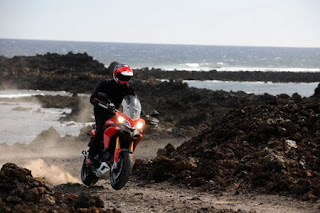 2011 Ducati Multistrada 1200S Touring Test Drive
2011 Ducati Multistrada 1200S Touring Test Drive 2011 Ducati Multistrada 1200S Touring Rear Side
2011 Ducati Multistrada 1200S Touring Rear Side 2011 Ducati Multistrada 1200S Touring Front Side
2011 Ducati Multistrada 1200S Touring Front Side



















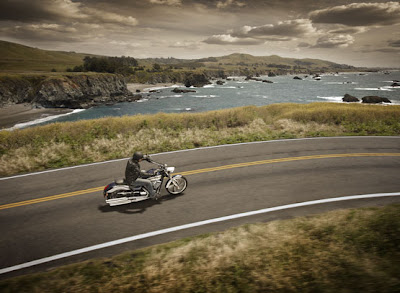
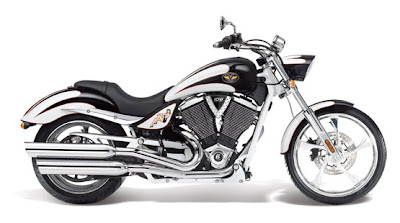
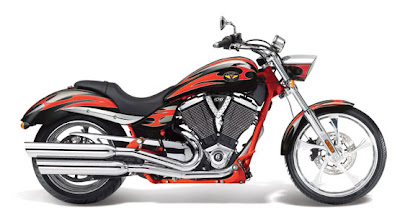




 Modification of red edition yamaha R6 yamaha R6-Custom. Design like yamaha R6 yamaha R1. Moto sport Specification.
Modification of red edition yamaha R6 yamaha R6-Custom. Design like yamaha R6 yamaha R1. Moto sport Specification.



 Honda CBR Custom Black Edition. Modification of custom motorcycle
Honda CBR Custom Black Edition. Modification of custom motorcycle


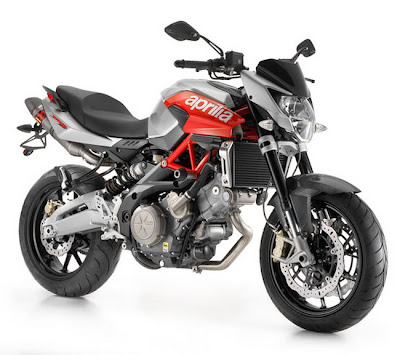

 kawasaki bikes
kawasaki bikes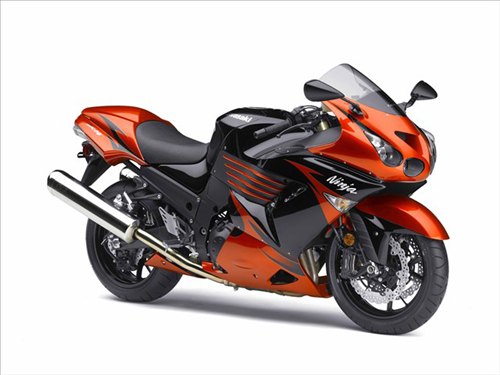 kawasaki
kawasaki kawasaki
kawasaki kawasaki bikes
kawasaki bikes kawasaki
kawasaki kawasaki bikes
kawasaki bikes kawasaki
kawasaki